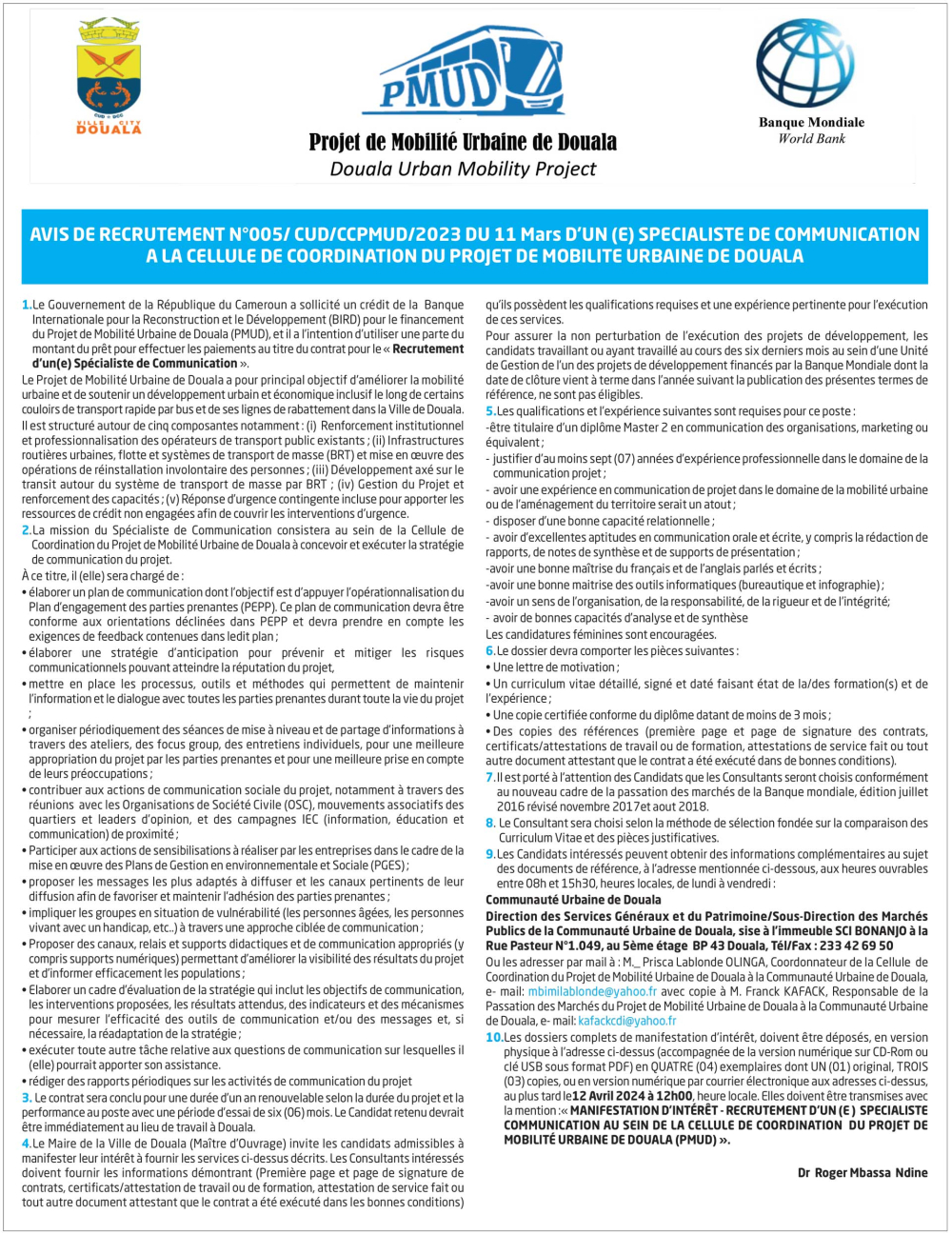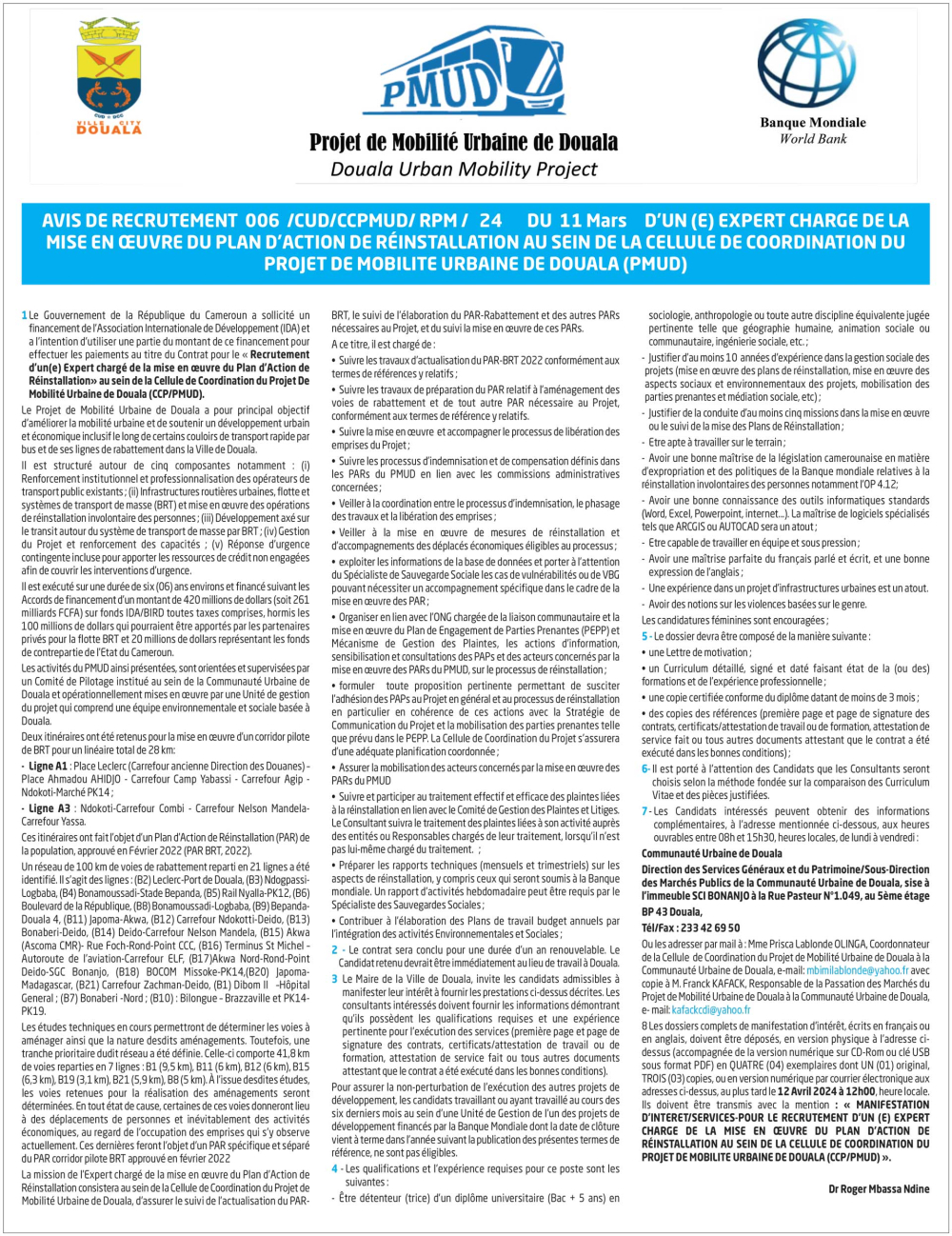Diversifying Energy Sources: Imperative For Dev’t!
- Par Godlove BAINKONG
- 06 févr. 2023 11:53
- 0 Likes
Cameroonians are more and more at a loss as to why darkness, which would have been an exception with the construction of multiple hydroelectricity dams that are supposed to generate electricity and provide water through their dams for other energy-producing plants, is rather becoming a rule. Observably, from north to south and east to west, people are gradually wallowing in obscurity owing to intense dry season that has diminished the water level of notably the Ntem River which supplies the Memve'ele hydroelectric dam and by extension the quantity of energy produced therein for household and industrial consumption.
The revolting word, ‘electricity rationing’ which consists in depriving some localities of the precious commodity, for some time, in favour of others, is back and may linger on for quite some time looking at the stakes at hand. The constraints in electricity production following the drop in hydrology on the Ntem River forces energy managing authorities to proceed with rationing electricity services in the Centre, South, East, Littoral, West, North West and South West regions. The persistence of the drop in production at the Memve'ele hydroelectric dam is reported to drag on until March. This entails stability in supply can only be thereafter. Households and industries thus have to get set to shoulder the effects until supply normalises.
This year’s electricity supply problems are not different from that of last year and the complaints are almost always the same. Water and Energy Resources Minister in a press outing last year at almost the same time said, “We witnessed a drop in hydrology in the Ntem River on which the Memve'ele dam is built; a drop corresponding to the low water level period which generally occurs between 15 February and 31 March of each year in the Ntem River basin. Unlike the Songloulou and Edea hydroelectric stations, the Memve'ele power station does not benefit from water stored in a reservoir dam in order to run its machines at full speed during low water level periods.” The same causes of last year are producing the same effects this year. Difficult to sit and expect change when nothing different is being done!
This is no doubt a bitter pill to swallow for households and industries that can no longer tell when and what quantity of electricity they could have at a given time. Intermittent cuts are the order of the day and even some who are said to be supplied with the precious commodity are subjected to low voltage which cannot even light some bulbs talk less of powering some apparatuses. While households count their losses in the regrettable scenario ranging from perishable items that get bad in refrigerators to destruction of some household appliances, industries are bound to function at a slower pace. The economic damages are hence immense!
It is on records that Cameroon, in matters of electricity supply, is configured in three major networks; and the problems arise differently depending on whether one is in the Southern Interconnected Network, the Northern Interconnected Network or the Eastern Interconnected Network. The Southern Interconnected Network, made up of six southern regions ( Centre, Littoral, West, North West, South West and South), has the advantage of having huge potential for hydroelectricity, by far the main source of electricity production in the country. Most of these potentials are found in the Sanaga river basin, where major hydroelectricity projects have been completed and energy production and transmission on course or underway.
This apparently justifies why the country took a decision to maximise all existing potentials with the pious hope of journeying out of darkness. Little wonder therefore that thousands of billions of scarce liquidity have been pumped into the construction of hydroelectricity dams from Lom-Panger in the East through Memve’ele and Mekin in the South regions. Records hold that between 2010 and 2021, the funds mobilized for investment in the electricity sector stood at over FCFA 3,500 billion. This comprises: FCFA 2,000 billion in production, FCFA 1,000 billion in electricity transmission and FCFA 500 billion in electricity distribution. Looking at the current poor energy supply situation almost across the country, the statistical revelations can only be startling. Observably, output is seemingly disproportionate to input. Diversification would have prov...
Cet article complet est réservé aux abonnés
Déjà abonné ? Identifiez-vous >
Accédez en illimité à Cameroon Tribune Digital à partir de 26250 FCFA
Je M'abonne1 minute suffit pour vous abonner à Cameroon Tribune Digital !
- Votre numéro spécial cameroon-tribune en version numérique
- Des encarts
- Des appels d'offres exclusives
- D'avant-première (accès 24h avant la publication)
- Des éditions consultables sur tous supports (smartphone, tablettes, PC)













Commentaires